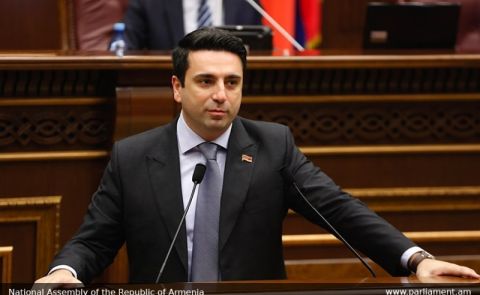
Recent economic developments regarding Azerbaijan

Azerbaijan expects to increase its oil and gas exports
Azerbaijani oil and gas product exports are projected to increase in the near future, according to Deputy Energy Minister Elnur Soltanov. He pointed out that Azerbaijan mostly sells gas under long-term contracts. "Azerbaijan's export potential develops in tandem with its gas output. The shipment of Azerbaijani gas to EU nations is increasing as a result of our existing arrangements with these countries," he stated. "These initiatives are in the national and economic interests of Azerbaijan," he stated.
Furthermore, addressing at an international conference at the ADA University dedicated to a global problem, Soltanov stated that Azerbaijan can boost gas supply. "In our region, Azerbaijan is the primary supplier of energy resources. Local natural gas production and consumption are increasing in Azerbaijan's home market, which is beneficial to both our country and the State Oil Company of Azerbaijan (SOCAR)," Soltanov explained.
In the next ten years, Azerbaijan wants to dramatically enhance the generation of power from renewable energy sources, according to the deputy minister. Furthermore, he said that Azerbaijan seeks to satisfy as many of its international partners' natural gas demands as possible, and that requests for Azerbaijani gas imports are being received from a variety of nations. "As you may be aware, we mostly export gas via pipelines, although development on alternate ways is already ongoing. The demand for Azerbaijani gas is high; as a result, efforts are being made to attract new investment to the nation," he stated.
Elnur Soltanov also stated that Azerbaijan's Energy Ministry intends to replace all of the country's obsolete Soviet-era power facilities with modern ones as soon as possible. He pointed out that thermal power plants supply 93-94% of Azerbaijan's electricity, necessitating the usage of a lot of gas. Soltanov told that the Caspian Sea has a lot of wind energy potential for electricity generation. In this regard, he stated that the Caspian Sea's wind power potential is estimated to be 157 gigawatts.
"The Caspian Sea's renewable energy potential is far bigger than Azerbaijan's entire energy potential in terms of other forms of alternative sources." The wind energy potential of this sea is ranked second in the world. "This indicates that the Caspian Sea is known not only for its oil and gas riches, but also for its clean, alternative energy," he explained.
The wind turbines proposed for placement in the Caspian Sea, according to the deputy minister, will be taller than 90 metres.
In April, Azerbaijan aims to transit 85,000 tonnes of oil through Russia
According to an informed industrial source, Azerbaijan aims to export 85,000 tonnes of oil via Russia in April, up from 80,000 tonnes a month earlier, and is unconcerned about oil transportation limits imposed by Russia's oil pipeline operator Transneft.
Azerbaijan has been pumping oil through a 1,330-kilometer pipeline from Baku to Novorossiysk, a port on Russia's Black Sea coast, since 1997.
Despite shipowners' concerns about the safety of visiting this Russian port, the country indicated earlier this month that it was ready to fulfil its responsibilities to transit the amounts of oil agreed with Transneft through the Baku-Novorossiysk pipeline.
"Previously, we planned to pump 340,000 tonnes through the Russian Federation in the second quarter of 2022, compared to 320,000 tonnes in the first quarter," he said. "However, given the unstable situation, volumes will now be specified on a monthly basis, and working consultations will be more active."
Because storage facilities at its ports, notably Novorossiysk, were full, Transneft said it has put limitations on transit oil shipments across its territory. Azerbaijan, on the other hand, was unfazed.
"For whatever batch of oil pumped via Russia, we always have a tanker from the customer. Because our oil is not kept at the port, Transneft's limits will have no impact on us," the source told the Tribune.
In January-February, Azerbaijan's banks reported yearly profits, owing to the country's economic growth
In the first two months of the year, commercial banks in Azerbaijan boosted net profit by 47.3% year on year to 58 million euros.
In January-February, the central bank reported that the banking sector's operational profit increased by 18.1% year on year to 87 million euros, total assets increased by 0.06% to 20 billion euros, and total liabilities decreased by 0.2% to 18 billion euros.
According to the central bank, bank loan portfolios increased by 2.8% year on year to 9 billion euros as of March 1. To 2.7 billion euros, total capitalisation increased by 1.9%. Individual deposits climbed by 9.3% to 5.3 billion euros, increasing the deposit portfolio by 0.4% to 14.6 billion euros.
Azerbaijan has 26 banks, 12 of which have foreign capital. The state-owned International Bank of Azerbaijan, the country's largest bank by assets, reported a 61% increase in net profit year over year to 112.5 million euros in 2021.
The COVID-19 epidemic wreaked havoc on Azerbaijan's economy, which is traditionally reliant on oil and gas, since decreasing demand for oil and supply issues reduced global oil prices. As the economy shrunk, restrictions to stop the virus from spreading had an impact on domestic consumption and expenditure.
Last year, restrictions were removed, and the economy began to revive, causing the Azerbaijani government to enhance its economic growth prediction for 2021, backed by improving oil prices on global markets and development in the non-oil sector of the ex-Soviet republic.
Last year, the banking industry in the nation continued to improve, with lenders reporting a total net profit of 328 million euros, up 7.2% year on year.
The GDP of Azerbaijan grew by 6.7% in the first two months of this year, compared to a 3.2% decline a year before, thanks to growth in the non-oil sector and higher global oil prices.
In January-February, the oil sector increased by 0.6%, while the non-oil sector increased by 10.1%. Gross domestic product (GDP) was 10 billion euros in nominal terms.
Azerbaijan's foreign debt limit will be set at 20% of GDP
President Ilham Aliyev of Azerbaijan has ordered that external debt be limited to no more than 20% of the country's gross domestic product (GDP).
Furthermore, the non-oil base deficit of Azerbaijan's consolidated budget should not exceed 20% of the country's non-oil GDP in the medium term, and precisely 27.5% of non-oil GDP in 2022.
As of January 1, Azerbaijan's total public debt was $9.9 billion, or 18.2% of GDP, down 0.2% from a year earlier.
The country's overall debt as of January 1, 2021, was almost $10 billion, or 23.4% of GDP, beating projections of 22.7%.
External debt amounted for 81.8% of the national debt in 2021, or $8.2 billion, or 14.9% of GDP. Domestic debt amounted for 3.3% of gross domestic product. External debt declined by 7.8%, but domestic debt soared by 58%.
Direct borrowings from the government – bond issuances and loans from foreign organisations – accounted for the majority of the external debt. Treasury bill emissions are commonly used to fund internal debt.
According to the government's public debt plan, which was authorised in 2018, the whole debt load is expected to drop to $7.7 billion (14.1% of GDP) by 2026, with external debt accounting for $6.5 billion (12% of GDP).
Azerbaijan expects to reduce its public debt to $7.7 billion, or 14.1% of GDP, by 2026, thanks to rapid economic growth and measures targeted at improving the investment climate.
Azerbaijan has increased non-oil exports by 39.4%
The Center for Economic Reforms Analysis and Communication of Azerbaijan announced in its February export assessment that non-oil exports climbed by $130.6 million, or 39.4%, in January-February 2021.
Azerbaijan's exports totalled $6 billion in the first two months of the year, including $461.8 million in the non-oil sector. In comparison to January-February 2021, fruit and vegetable output grew by $21.9 million to $92.3 million.
Cotton yarn ranked first in non-oil exports, with $51.1 million, followed by carbamide ($29.3 million) and hazelnuts ($28.6 million).
In January-February, Turkey led the way with receiving $153.3 million in non-oil product exports, followed by Russia with $119.1 million and Georgia with $28.1 million.
In February 2022, exports totalled $2.9 billion during the normalisation phase. Exports of non-oil goods climbed by 24% to $229.6 million. Furthermore, food exports rose 19.4% to $51.7 million, while non-food exports rose 25.4% to $117.9 million.
In February, Turkey led the way with $82.7 million in non-oil product exports, followed by Russia ($48 million) and Georgia ($13.6). Cotton yarn ($28.9 million), followed by electricity ($16 million) and carbamide ($14.7 million) are the top non-oil exports in February 2022.
The data on export orders obtained by the Azexport.az site was also included in the export review. Therefore, in January-February 2022, the site received orders totalling $83.9 million. The total value of export orders received by Azexport.az in February 2022 was $38.7 million. It's worth noting that between January 2017 and February 28, 2021, the platform collected $2.8 billion in export orders from 145 nations.
Furthermore, non-oil exports through the Single Window Export Support Centre totalled $24.3 million in March of this year.
Azerbaijan's industrial zones received over $3.7 billion in investment
According to the Ministry of Economy, enterprises have invested over $3.7 billion in Azerbaijan's industrial zones to date. The ministry emphasised that industrial zones are a beneficial method for increasing domestic output, reducing imports, and establishing new export prospects. "To date, 95 business organisations have been granted resident status in industrial zones, with 58 of them already starting operations." Entrepreneurs have invested over $3.7 billion in industrial zones, resulting in the creation of over 9,700 permanent employments, according to the government.
According to the statement, the next stage of current projects will see over $235.2 million invested in industrial zones, with over 3,200 new jobs created.
Furthermore, during January-February 2022, firms operating in industrial zones sold items worth $25.4 million, of which $112.3 million was exported.
"Over the same time in 2021, sales of industrial zone products climbed by 76%, while exports increased by 138 percent," the ministry added.
Furthermore, industrial zones have produced items worth $3.7 billion and exported goods worth $1.1 billion, accounting for nearly 32% of total production. More than 35 nations across the world received products.
Azerbaijan has five industrial zones, with the primary purpose of assuring the non-oil sector's long-term growth, as well as building and growing new production areas in the nation via the use of innovative technologies and increasing these goods' export map.
One of the areas with a significant potential for creative economic growth is the building of industrial parks. Deeds to construct the Agdam Industrial Park (May 28, 2021) and the Araz Valley Economic Zone were signed in Azerbaijan's freed territory (October 4, 2021).
See Also

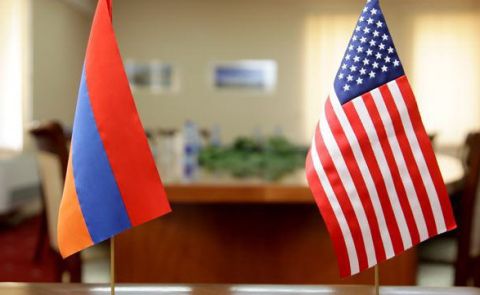
Mirzoyan Meets US Deputy Assistant Secretary Joshua Huck
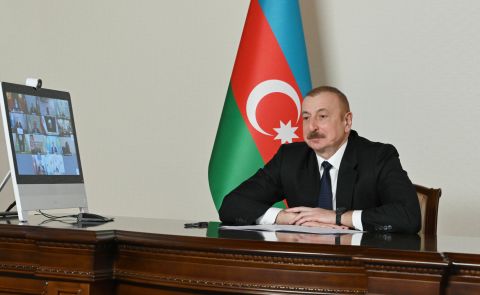
Azerbaijani President Holds Talks with UAE and German Business Delegations on Economic Cooperation
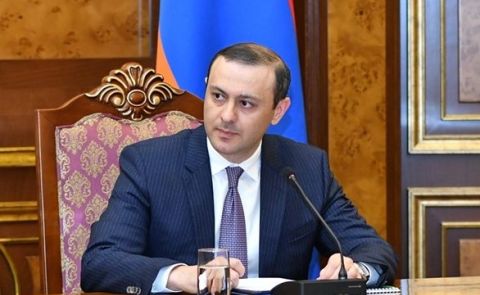
Grigoryan Confirms Armenia’s Readiness to Dissolve OSCE Minsk Group Upon Peace Treaty Signing
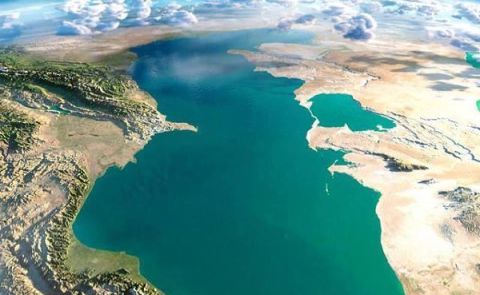
Azerbaijani Official Warns of Ecological Risks to Caspian Sea, Similar to Lake Urmia and Aral Sea

